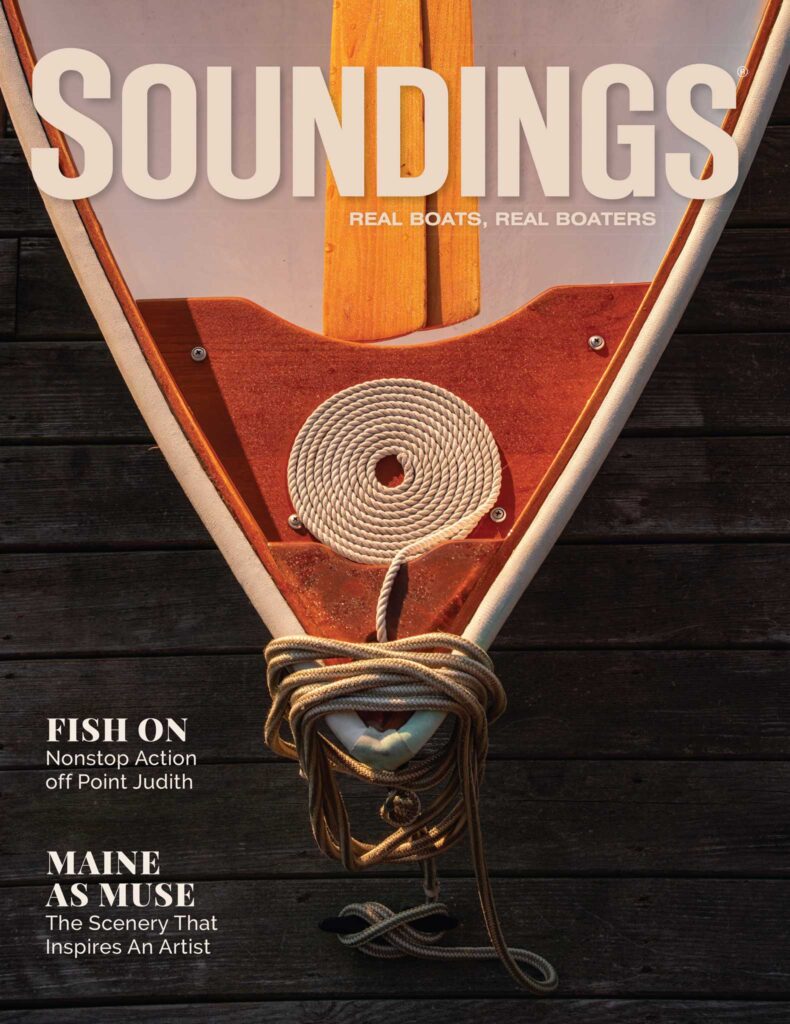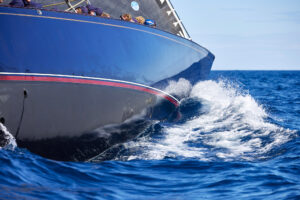A TowBoatUS skipper was tossed into Florida’s St. Augustine Inlet last fall while trying to free a grounded 48-foot sailboat. The skipper was dressed in shorts, a T-shirt, sweatshirt and baseball cap, and he was close to dying of hypothermia by the time he was rescued more than three hours later. This was Florida, where the water is warm.

Indeed, the water was relatively warm, but the skipper was wearing cotton clothing and, on the water, cotton kills. I know cotton is cool and comfortable in hot weather. It absorbs perspiration and keeps you comfortable. Cotton does this because it is hydrophilic. It loves moisture.
However, if it’s cool enough to justify wearing a sweatshirt, wear something other than cotton. There are polyester and polypropylene fleece jackets and vests that, unlike a cotton sweatshirt, will be hydrophobic and will try to get rid of moisture they absorb. Such clothing will help keep you warmer even when you are in the water.
Hypothermia is something I understand well because of a few episodes I’ve experienced. On Lake Superior one early September, we anchored in about 10 feet of water, but I wasn’t sure how well our Danforth anchor had set in the sandy bottom. Too lazy to test it, I asked my intrepid wife, Lou, to dive in and check the hook. Lou was an excellent swimmer and diver in her salad days.
With more enthusiasm than thought, she dove in. The thermocline in this area was at about seven or eight feet. As she swam down the anchor rode, she encountered the cold water and pushed on until she realized that if she didn’t surface she could become a victim of Gitchigoomie.
She made it to the surface, but had to be helped aboard. Her normally rosy cheeks were purple, her lips were blue, and she shivered, teeth chattering uncontrollably. We got her below and out of her swimsuit and wrapped her in polyester fleece. With hot coffee and rest, it still took a good 15 minutes for her to thaw and, dressed in a dark wool sweater and jeans, to absorb the warmth of the sun.
My daughter, who was a competition swimmer in high school and at the University of Minnesota, called me a wuss for preparing to dinghy ashore to Hermit Island in the Apostle Islands. She challenged me to race her ashore in the dink. She executed a beautiful dive into Lake Superior and immediately resembled a duck trying to take off from the water.
She made it to shore, where she sat trembling while I unsympathetically brought her a wool sweater and towel to return her to the boat. Lake Superior in late summer in that shallow, sheltered, sandy cove was only 55 F. Her suntanned skin was mottled purple and red.
It doesn’t take much to bring on hypothermia, even in the summer. And if you’ve cruised Maine, you know just how cold the water is in the dead of August. Here are some things to keep in mind.
• When you begin losing heat, your body responds with muscle contractions — first goose bumps, then shivering. The friction from your muscles generates heat. As you continue to lose heat, the body tries to maintain its core temperature by reducing blood flow to your extremities. Attempting to swim causes more heat to be lost, accelerating the onset of hypothermia, so try to stay calm.
• You can survive about seven hours in water that’s 60 F, about three hours in water that’s 50 degrees, and about 15 minutes in freezing water. If your core temperature drops below 77 degrees you’re probably dead; you’d have lapsed into unconsciousness by the time your temperature fell to 86 degrees.
• Survival in cold water is one situation in which fat can be a plus; it provides insulation. The trick is to create an insulating layer of water next to your skin. If you’re wearing a PFD — and you should be — assume the fetal position to reduce heat loss from the head, neck, sides, groin and armpits. If you have company, hug one another. Doing so can increase survival time by half. Your head is a major source of heat loss, so keep it out of the water and as dry as possible. Keep a wool or polyester watch cap on board when you’re on the water.
• Wear insulating clothing if the water is below 60 degrees. Silk has insulating value. We carry it on cruises because the nights can get cool and you can suffer hypothermia in cool air. It won’t kill you directly in cruising season, but it can slow your reactions. Wool and certain polyester fabrics also are good insulators. Wool provides insulation even when wet. However, it retains water and is heavy when soaked. Some polyester and other fabrics wick moisture away from the skin.
• Most of us will never use a survival suit, which will keep you afloat, dry and insulated. However, float coats with neoprene and beavertail jackets are good options.
• A victim’s core temperature can continue to drop for maybe a half hour after rescue. If a victim is unconscious but breathing, treat him or her to prevent shock. Breathe into the victim’s face as they inhale or waft steam from a kettle of boiling water toward them. Try to slowly warm the core. Attempting to warm a victim too aggressively will draw blood to the skin and can inhibit raising the core temperature. Don’t massage the limbs; it draws warm blood from the core to the skin, where it cools and circulates back. At a safety-at-sea seminar, I learned never to consider a victim beyond help unless he or she is warm.
• You and your crew should be well-rehearsed in man-overboard techniques. Practice your MOB drills and wear your PFD.
This article originally appeared in the August 2011 issue.










